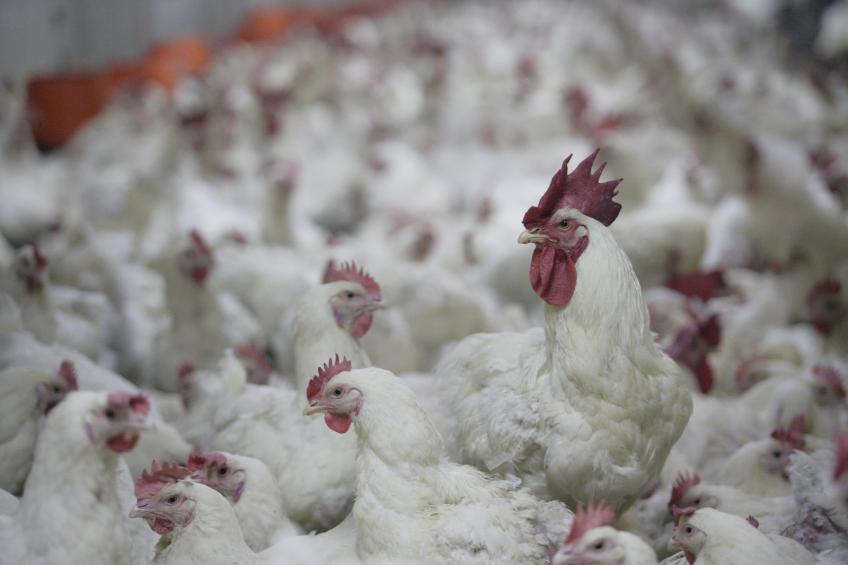Planning and regulating breeder flock size

With growing demand for poultry meat in the future, initial planning of the breeder/hatchery aspect of the production chain has to take into account this future potential. Otherwise the operation will soon reach limiting factors such as volume requirements or forced quality infringements.
Initially the planning of the breeding stock and hatchery layout would have been made for the then current requirement in volumes. As time passes, situations will most likely have changed, resulting in parent rearing and growing facilities, as well as the laying housing, being inadequate to meet changing requirements.
Flock sizes are increasing rapidly from the smaller numbers that were commonly seen, of perhaps 5000 parent hens. Currently, a 10,000 bird flock is not enough to supply the demands of today’s industry which requires all chick orders for a particular house size to be all supplied from the same parent flock. With current controlled environment broiler rearing – growing houses which can accommodate forty thousand chicks from day old to 28 to 33 days of age, or older, and give the maximum potential growth, the lowest FCR and arguably the most important factor, that all the chicks should be from the same parent flock and ideally from the same house and site.
All eggs from one flock
Looking at it from all angles it is essential that all the eggs are from one individual flock and of a maximum six day age span, from first to last day of collection, (preferably five days). One can go wider than this, however the narrower this gap, the better the results that will be seen from the hatchery perspective, not to mention the corresponding broiler flock which will show greater uniformity, lower mortality with a better FCR, resulting in increased profits all round, as well as motivation for all concerned. Other Key points that will be evident with all the eggs coming from the same parent flock are, the vaccination is similar and the birds will have all been exposed to the same conditions, both environmentally as well as biologically, thus ensuring the highest level of uniformity in all respects, providing of course that the hatchery is operating to the utmost efficiency. Operating with biosecurity as a top priority as well as the machines being managed at the highest level in all aspects of that production cycle is a prerequisite to any company’s well-being.
Extra care is needed to be taken here as the hatchery is basically a constant replacement cycle production unit, which can be reduced by the use of single stage machines. In achieving this biosecurity status a product is created that is absolutely to the highest level of excellence possible, giving the company farms or customers the absolute optimum product resulting in the chicks to start off with the best possible chance of reaching their genetic potential.
Experience learns that with both broiler and layer day old chicks, that problems occur with the mixing of different flocks and especially if the eggs are not from the same farm. Generally, size variation will widen the CV (coefficient of variation) and this will result in an even larger size and weight spread of the chicks with little chance of reaching 200 + grams at the seven day weighing. This will ultimately produce a flock, where the mortality is higher with a reduced FCR and wider size spread combined with a lower final body weight at lifting resulting in under breed targets obtained.
Doing the maths
Assuming 3.8 high quality uniform chicks per parent per week giving a CV of not less than 98 % to supply 40000 plus 1% extra ( total 40400 ) day old chicks, one will need, on paper, 10632 parent hens in production. As production reduces and taking mortality and culls into account this figure will increase and as much as 15% extra birds (12268) will be required to maintain the constant chick numbers to avoid the mistake of adding chicks from another flock. This can also be critical from a biosecurity point of view. One should aim to have a slight excess of eggs, as there is nothing worse in adding to make up numbers on hatch day. Rather be short and keep them all the same. Any grower who knows the chick business should go along with that. The 40000 chicks could in reality, include 4% which the customer should also pay for, less any that the hatchery will allow for early mortality. A maximum of 2.5% should be adequate to cover mortality and the balance for culls and losses in catch up.

One should also seriously consider using only one breed and gearing the management to be able to operate at 100% plus with that breed. As each breed requires different management techniques due to different genetic traits which will require certain management changes. However, different breeds can be used but this should be done on other production sites. Climate conditions can affect a breeds performance as some are fast and some are slow feathering and this results in different house temperature settings for the slower feathering breeds. One should never mix two different breeds in the same rearing house. At altitude some breeds are more prone to become affected by Acities, or ‘ water belly,’ as it is also commonly known in some areas.
Vaccination in hatchery
In order to have the best chance of obtaining optimal results all chicks should be in ovo vaccinated on day 18.5 against ND and IBD (see article on Vaccination WP Vol 31 No 4 2015). The advantages of having this operation done in sterile conditions is incalculable. Additional vaccinations can also be administered by the hatchery by means of a coarse spray – namely – Infectious Bronchitis, Newcastle primer or any others pertinent to your area. Preference should favour the hatchery to also administer these, besides a correct environment and spray cabinet technique this will, in many cases give the vaccine time to start working before the chicks are delivered to the site. For optimal vaccination schemes, there should be a continuous dialogue between the hatchery and the private veterinarian of vaccine supplier.












